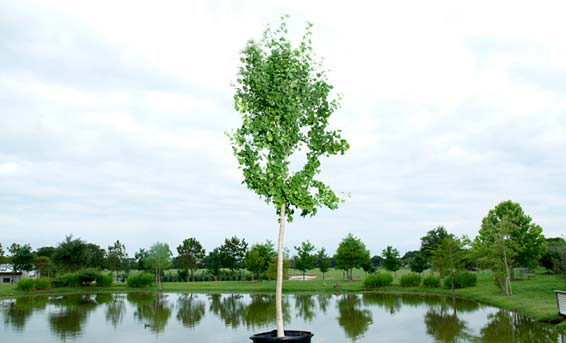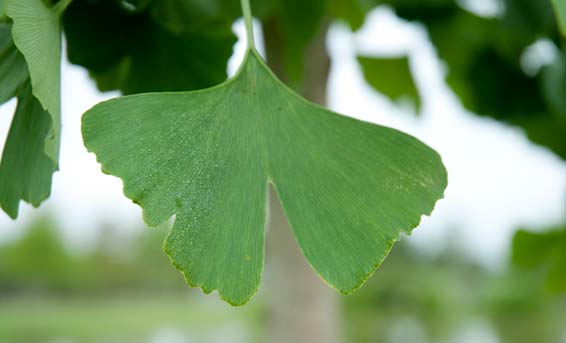
The
ginkgo provides an attractive, consistently symmetrical shade tree with
a wide open profile, sparingly branched. They grow 40 to 60 feet, some
up to 100. Photo by Don Glentzer.
Ginkgo
Ginkgo biloba
A strong, beautiful, and long lived shade tree,
a specimen in Korea is reportedly over 1,000 years old. They do well in
urban sites because they’re very tolerant of city pollution, car
exhaust, and confined root systems. The tree provides spectacular
yellow fall color.
The Ginkgo thrives in most well-drained soils but does not like solid white rock such as the limestone of north Texas. It’s free of insects and diseases.

The
fan shaped leaves are lovely. In late summer or fall they turn yellow
for a short time before dropping all their leaves at the same time.
Photo by Don Glentzer.
The ginkgo has been called a “living fossil” and the “tree of life.”
It is one of the oldest trees on earth. The family order of ginkgoales
was a dominant group of trees during the age of dinosaurs 135 million
to 180 million years ago. Today, only the Ginkgo biloba remains from
this ancient group. A native of China, Buddhist monks brought it to
Japan to plant around temples, considering it sacred. The medicinal
uses of the tree are legendary.



